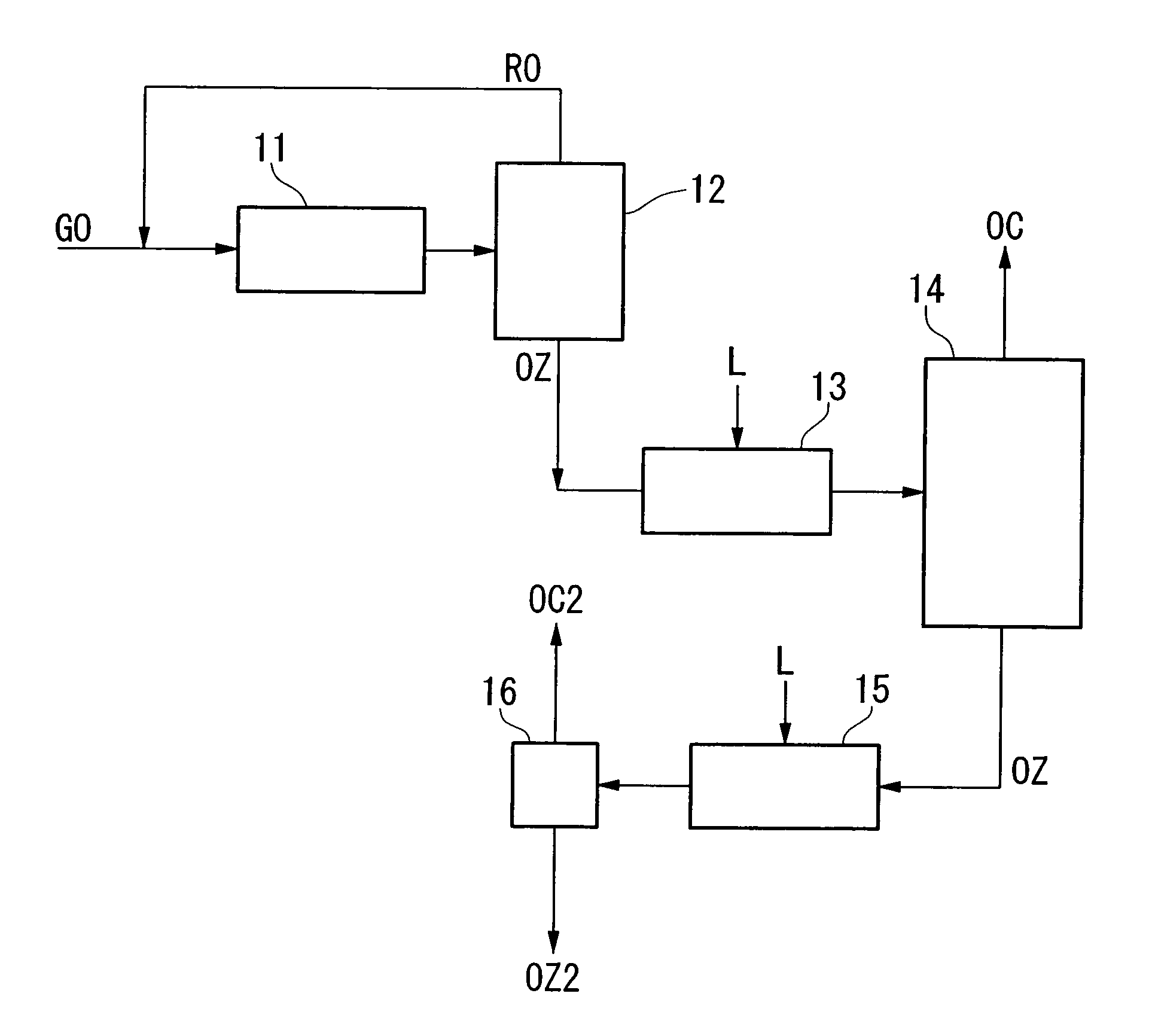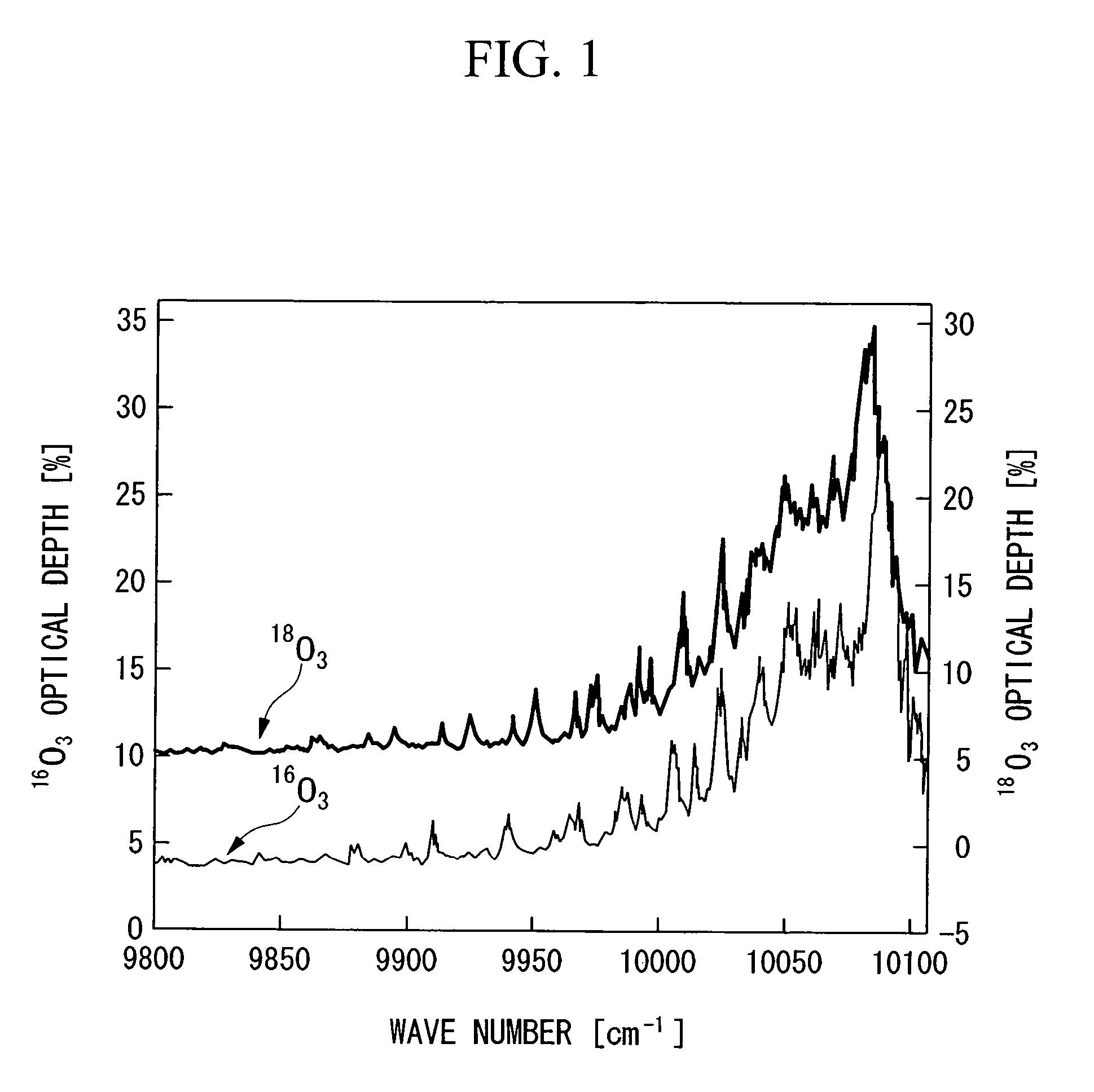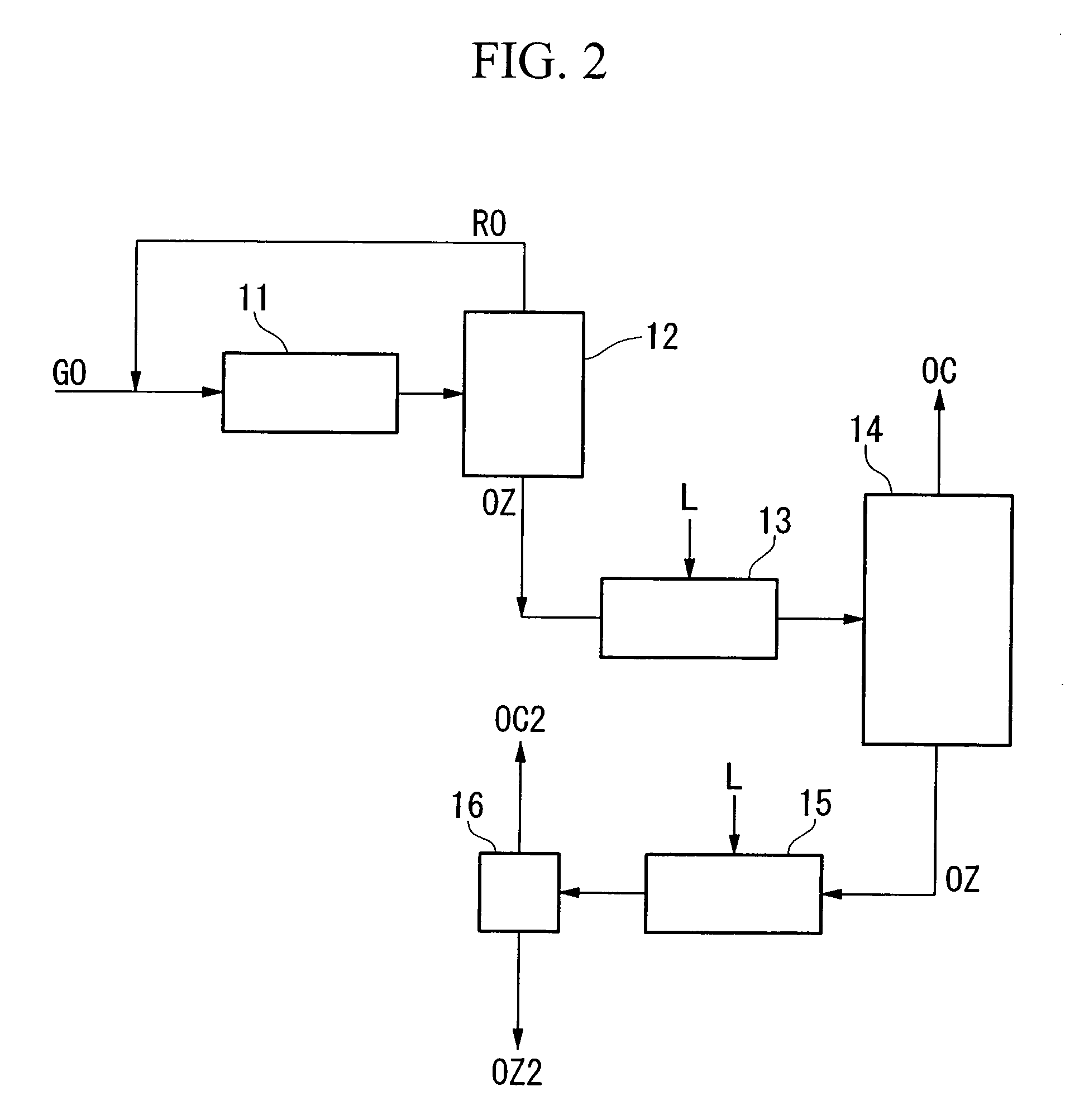Method for concentrating oxygen isotope
a technology of oxygen isotopes and oxygen isotopes, which is applied in the direction of isotope separation, separation process, dispersed particle separation, etc., can solve the problems of low luminescence efficiency of laser light, low utilization efficiency of light, and post-processing necessity, so as to reduce facilitate the handling of ozone. , the effect of reducing the concentration rate of oxygen isotopes
- Summary
- Abstract
- Description
- Claims
- Application Information
AI Technical Summary
Benefits of technology
Problems solved by technology
Method used
Image
Examples
first embodiment
[0101]FIG. 3 is a system diagram showing the oxygen isotope concentration device of the present invention. This concentration device is provided an ozonizer 21 for obtaining ozone from raw material oxygen, a first distillation tower 22 that separates the ozone formed with this ozonizer 21 and the raw material oxygen, a condenser 23 for imparting the cold required by the low-temperature distillation procedure in this first distillation tower 22, a reboiler 24 for generating rising gas in the first distillation tower, a heat exchanger 25 for recovering the cold of the first distillation tower effluent gas in the first distillation tower feed gas, a buffer tank for temporarily storing the first distillation tower effluent gas, and a blower 27 for circulating and feeding first distillation tower effluent gas in buffer tank 26 to ozonizer 21.
[0102]The equipment for concentrating oxygen containing a specific isotope from the ozone is provided with a photoreaction cell 32 for separating a ...
second embodiment
[0112]FIG. 4 is a system diagram showing an oxygen isotope concentration device. It shows an example of the configuration of a device provided with equipment for obtaining a rare gas-ozone mixed gas in a stage prior to the concentration device.
[0113]This concentration device, together with being provided with an ozone formation unit 111 that forms ozone from raw material oxygen GO, an ozone separation unit 112 that separates raw material oxygen containing ozone formed in said ozone formation unit 111 into ozone OZ and raw material oxygen RO, an ozone photodissociation unit 113 that selectively degrades ozone containing a specific oxygen isotope in its molecule into oxygen by irradiating the ozone OZ separated in said ozone separation unit 112 with light L of a specific wavelength, and an oxygen isotope concentration unit 114 that separates oxygen OC formed by the dissociation of ozone in said ozone photodissociation unit 113 from non-dissociated ozone OZ to concentrate a desired oxy...
third embodiment
[0133]Thus, oxygen generated by dissociation of ozone, non-dissociated ozone, krypton RG circulating within the system, and this rare gas KG composed of at least one type selected from helium, neon and argon can be fed into oxygen isotope concentration unit 114 in a mixed state. At least one type of rare gas KG selected from helium, neon and argon is separated into high boiling point ozone and krypton by a separation procedure such as low-temperature distillation in oxygen isotope concentration unit 114, and discharged with oxygen OC1 having a lower boiling point. Thus, although oxygen containing a specific oxygen isotope is obtained in a state that is diluted with rare gas, since the flow rate can be regulated more easily as compared with a small amount of high-purity oxygen, handling becomes easier. Here, other aspects of the device configuration are the same as those of the aforementioned
PUM
| Property | Measurement | Unit |
|---|---|---|
| wavelength | aaaaa | aaaaa |
| wavelength | aaaaa | aaaaa |
| wavelength | aaaaa | aaaaa |
Abstract
Description
Claims
Application Information
 Login to View More
Login to View More - R&D Engineer
- R&D Manager
- IP Professional
- Industry Leading Data Capabilities
- Powerful AI technology
- Patent DNA Extraction
Browse by: Latest US Patents, China's latest patents, Technical Efficacy Thesaurus, Application Domain, Technology Topic, Popular Technical Reports.
© 2024 PatSnap. All rights reserved.Legal|Privacy policy|Modern Slavery Act Transparency Statement|Sitemap|About US| Contact US: help@patsnap.com










